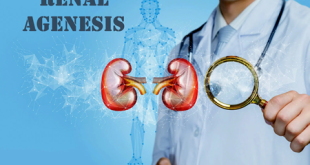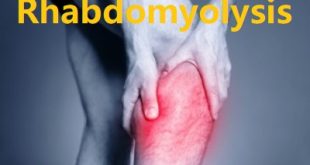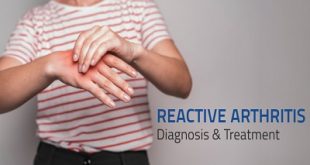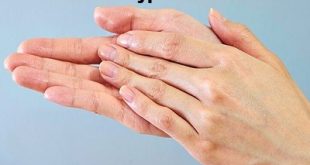Definition
Restless leg syndrome (RLS) or Willis-Ekbom disease(WED) is a common cause of painful legs. The leg pain of restless leg syndrome typically eases with motion of the legs and becomes more noticeable at rest. Restless leg syndrome also features worsening of symptoms and leg pain during the early evening or later at night.
Restless leg syndrome
Restless leg syndrome is often abbreviated RLS; it has also been termed shaking leg syndrome. Night time involuntary jerking of the legs during sleep is also known as periodic leg/limb movement disorder.
History
The first known medical description of RLS was by Sir Thomas Willis in 1672. Willis emphasized the sleep disruption and limb movements experienced by people with RLS. Initially published in Latin (De Anima Brutorum, 1672) but later translated to English (The London Practice of Physick, 1685),
The term “fidgets in the legs” has also been used as early as the early nineteenth century. Subsequently, other descriptions of RLS were published, including those by Francois Boissier de Sauvages (1763), Magnus Huss (1849), Theodur Wittmaack (1861), George Miller Beard (1880), Georges Gilles de la Tourette (1898), Hermann Oppenheim (1923) and Frederick Gerard Allison (1943). However, it was not until almost three centuries after Willis, in 1945, that Karl-Axel Ekbom (1907–1977) provided a detailed and comprehensive report of this condition in his doctoral thesis, Restless legs: clinical study of hitherto overlooked disease. Ekbom coined the term “restless legs” and continued work on this disorder throughout his career. He described the essential diagnostic symptoms, differential diagnosis from other conditions, prevalence, relation to anemia, and common occurrence during pregnancy.
Epidemiology
Except perhaps in Asian populations, RLS is a common disorder, occurring in about 10% of the population. The age-adjusted prevalence of RLS determined by telephone interviews in a random population of 1803 adults in Kentucky was 10%. A Canadian survey of 2019 adults estimated the prevalence of RLS symptoms at 17% for women and 13% for men. A population-based survey in West Pomerania, Germany, of 4107 subjects found an overall 10.6% prevalence. Using standardized questions in face-to-face interviews, Rothdach et al. reported an overall prevalence of 9.8% in 369 participants ages 65-83 years in Augsburg, Germany. In a study from Japan, 4612 participants living in urban residential areas were assessed for a single symptom of RLS by a self-administered questionnaire of the following two items: (1) Have you ever been told you jerk your legs or kick sometimes and (2) have you ever experienced sleep disturbance due to a creeping sensation or hot feeling in your legs? The prevalence of RLS ranged from 3% in women ages 20-29 years to 7% in women ages 50-59 years and correlated with age. In contrast to the first three studies, RLS had a higher prevalence in men than women, with the difference reaching significance in those 40-49 years old; in men there was no positive correlation with age. Face-to-face interviews of 157 consecutive individuals ages 55 years and older participating in a health screening program and 1000 consecutive individuals ages 21 years and older from a primary health care center in Singapore yielded much lower prevalence data.
Types
Restless legs syndrome (RLS) can be either primary or secondary, and the causes vary.
Primary RLS is a neurological disorder. Although the majority of people with RLS begin to experience symptoms in their middle years, some may have signs of the problem in childhood. Their symptoms may slowly progress for years before becoming a regular occurrence.
Secondary RLS tends to be more severe than the primary type and stems from another underlying condition, including the following:
- Anemia or low blood-iron levels
- Folate deficiency
- Nerve damage due to diabetes or other conditions
- Kidney disease or dialysis
- Attention deficit disorder (ADD)
- Attention deficit/hyperactivity disorder (ADHD)
- Pregnancy
- Rheumatoid arthritis
- Parkinson’s disease
Risk factors
RLS/WED can develop at any age, even during childhood. The disorder is more common with increasing age and more common in women than in men.
Restless legs syndrome usually isn’t related to a serious underlying medical problem. However, RLS/WED sometimes accompanies other conditions, such as:
Peripheral neuropathy: This damage to the nerves in your hands and feet is sometimes due to chronic diseases such as diabetes and alcoholism.
Iron deficiency: Even without anemia, iron deficiency can cause or worsen RLS/WED. If you have a history of bleeding from your stomach or bowels, experience heavy menstrual periods or repeatedly donate blood, you may have iron deficiency.
Kidney failure: If you have kidney failure, you may also have iron deficiency, often with anemia. When kidneys don’t function properly, iron stores in your blood can decrease. This, with other changes in body chemistry, may cause or worsen RLS/WED.
Causes of restless leg syndrome
The cause of restless leg syndrome is unknown in most people. However, restless leg syndrome has been associated with
- Pregnancy,
- Obesity,
- Smoking,
- Iron deficiency and anemia,
- Nerve disease,
- Polyneuropathy (which can be associated with hypothyroidism, heavy metal toxicity, toxins, and many other conditions),
- Other hormone diseases such as diabetes, and
- Kidney failure (which can be associated with vitamin and mineral deficiency).
- Some drugs and medications have been associated with restless leg syndrome including:
- Caffeine,
- Alcohol,
- H2-histamine blockers (such as ranitidine [Zantac] and cimetidine [Tagamet]), and certain antidepressants (such as amitriptyline [Elavil, Endep]).
Occasionally, restless leg syndrome run in families. Recent studies have shown that restless leg syndrome appears to become more common as a person ages. Also, poor venous circulation of the legs (such as with varicose veins) can cause restless leg syndrome.
Symptoms of restless leg syndrome
The International Restless Legs Syndrome Study Group described the following symptoms of restless legs syndrome (RLS):
- Strange itching, tingling, or “crawling” sensations occurring deep within the legs; these sensations may also occur in the arms.
- A compelling urge to move the limbs to relieve these sensations
- Restlessness — floor pacing, tossing and turning in bed, rubbing the legs
Symptoms may occur only with lying down or sitting. Sometimes, persistent symptoms worsen while lying down or sitting and improve with activity. In very severe cases, the symptoms may not improve with activity.
Other symptoms of RLS include the following:
- Sleep disturbances and daytime sleepiness
- Involuntary, repetitive, periodic, jerking limb movements that occur either in sleep or while awake and at rest; these movements are called periodic leg movements of sleep or periodic limb movement disorder. Up to 90% of people with RLS also have this condition.
In some people with RLS, the symptoms do not occur every night but come and go. These people may go weeks or months without symptoms (remission) before the symptoms return again.
Complications of restless leg syndrome
Restless legs syndrome rarely results in any serious consequences. However, in some cases severe and persistent symptoms can cause considerable mental distress, chronic insomnia, and daytime sleepiness. In addition, since restless legs syndrome (RLS) is worse when resting, people with severe RLS may avoid daily activities that involve long periods of sitting, such as going to movies or traveling long distances.
Diagnosis and test
There’s no single test for diagnosing restless legs syndrome.
A diagnosis will be based on your symptoms, your medical and family history, a physical examination, and your test results.
Your GP should be able to diagnose restless legs syndrome, but they may refer you to a neurologist if there’s any uncertainty.
There are four main criteria your GP or specialist will look for to confirm a diagnosis. These are:
- an overwhelming urge to move your legs, usually with an uncomfortable sensation such as itching or tingling
- your symptoms occur or get worse when you’re resting or inactive
- your symptoms are relieved by moving your legs or rubbing them
- your symptoms are worse during the evening or at night
Blood tests
Your GP may refer you for blood tests to confirm or rule out possible underlying causes of restless legs syndrome. For example, you may have blood tests to rule out conditions such as anaemia, diabetes and kidney function problems.
It’s particularly important to find out the levels of iron in your blood because low iron levels can sometimes cause secondary restless legs syndrome. Low iron levels can be treated with iron tablets.
Sleep tests
If you have restless legs syndrome and your sleep is being severely disrupted, sleep tests such as a suggested immobilisation test may be recommended. The test involves lying on a bed for a set period of time without moving your legs while any involuntary leg movements are monitored.
Occasionally, polysomnography may be recommended. This is a test that measures your breathing rate, brain waves and heartbeat throughout the course of a night. The results will confirm whether you have periodic limb movements in sleep (PLMS).
Treatment and medications
Treatment for RLS is targeted at easing symptoms. In people with mild to moderate restless legs syndrome, lifestyle changes, such as beginning a regular exercise program, establishing regular sleep patterns, and eliminating or decreasing the use of caffeine, alcohol, and tobacco, may be helpful. Treatment of an RLS-associated condition also may provide relief of symptoms.
Other non-drug RLS treatments may include:
- Leg massages
- Hot baths or heating pads or ice packs applied to the legs
- Good sleep habits
- A vibrating pad called Relaxis
Medications may be helpful as RLS treatments, but the same drugs are not helpful for everyone. In fact, a drug that relieves symptoms in one person may worsen them in another. In other cases, a drug that works for a while may lose its effectiveness over time.
Drugs used to treat RLS include:
- Dopaminergic drugs, which act on the neurotransmitter dopamine in the brain. Mirapex, Neupro, and Requip are FDA-approved for treatment of moderate to severe RLS. Others, such as levodopa, may also be prescribed.
- Benzodiazepines, a class of sedative medications, may be used to help with sleep, but they can cause daytime drowsiness.
- Narcotic pain relievers may be used for severe pain.
- Anticonvulsants, or antiseizure drugs, such as Tegretol, Lyrica, Neurontin, and Horizant.
Although there is no cure for restless legs syndrome, current treatments can help control the condition, decrease symptoms, and improve sleep.
Lifestyle and home remedies
Making simple lifestyle changes can help alleviate symptoms of RLS/WED.
Try baths and massages: Soaking in a warm bath and massaging your legs can relax your muscles.
Apply warm or cool packs: Use of heat or cold, or alternating use of the two, may lessen your limb sensations.
Try relaxation techniques: such as meditation or yoga. Stress can aggravate RLS/WED. Learn to relax, especially before bedtime.
Establish good sleep hygiene: Fatigue tends to worsen symptoms of RLS/WED, so it’s important that you practice good sleep hygiene. Ideally, have a cool, quiet, comfortable sleeping environment; go to bed and rise at the same time daily; and get adequate sleep. Some people with RLS/WED find that going to bed later and rising later in the day helps in getting enough sleep.
Exercise: Getting moderate, regular exercise may relieve symptoms of RLS/WED, but overdoing it or working out too late in the day may intensify symptoms.
Avoid caffeine: Sometimes cutting back on caffeine may help restless legs. Try to avoid caffeine-containing products, including chocolate and caffeinated beverages, such as coffee, tea and soft drinks, for a few weeks to see if this helps.
 Diseases Treatments Dictionary This is complete solution to read all diseases treatments Which covers Prevention, Causes, Symptoms, Medical Terms, Drugs, Prescription, Natural Remedies with cures and Treatments. Most of the common diseases were listed in names, split with categories.
Diseases Treatments Dictionary This is complete solution to read all diseases treatments Which covers Prevention, Causes, Symptoms, Medical Terms, Drugs, Prescription, Natural Remedies with cures and Treatments. Most of the common diseases were listed in names, split with categories.








sir
my right leg fingers are shaking, with out my knowledge, now started left leg fingers, what is the problem, but i am a diabetic patient, bp also, please give me advice
These problems might be a symptoms of BP and diabetes. Please consult a physician to avoid serious effects.
RLS is ruining my life.
Get help from a physician as soon as possible.
Hai sir my leg is feeling to tierd and veins showing outer portion pls sugest me what i want to do in future thanks sir.
Please consult a doctor to reduce serious effects in future.
In addition to adequate sleep and regular exercise, regular sea bathing or swimming can help.
Thank you for your suggestion.
Dear Sir I got something exactly like someone is piercing the back of my left foot on the right part for 5 to 10 seconds 4 times a day. I want to know what is it? Thank you sir
please consult a doctor to avoid serious effects in future.
sir
i am having so much of sensation in my both legs when i try to rest
can you kindly tell me the reason why this haopens
It might be due to restless work. Or consult a doctor to know about the reason for the leg sensation.
dx’d w/ RLS in ’04 tx’d w/ Mirapex gradually increased now on 1.5mg BID having severe pain (10) on top of both feet that feels like my bones are broken. some days worse than others but horrific pain. aspercreme with 4% lido cream w/o relief, nsaids w/o relief, Fioricet w/ moderate relief (7). do u think it’s RLS related? something else? I have fibromyalgia as well.
Please consult a doctor.
Sir, I need your help my wife has been suffering with this kind situation for morethan 2weeks now, after having an X-ray the result show that there is nothing happened to her but the pain keep on increasing especially in the night time please sir.
Please consult a doctor.
what is a good B-12 reading mine never gets above 268
Animal Liver and Kidneys
Clams are small, chewy shellfish that are packed with nutrients
Sardines
Beef
Fortified Cereal
Tuna
Fortified Nutritional Yeast
Trout
Salmon
Fortified Nondairy Milk
Milk and Dairy Products
Eggs
what is the right medicine to reduce symptom for a restless leg?
Ropinirole (Requip), rotigotine (Neupro) and pramipexole (Mirapex) are approved by the Food and Drug Administration for the treatment of moderate to severe RLS. please consult a doctor before taking medicine.
I am having some pain under my right leg please what is the problem
Please consult a doctor to get rid of this problem.
rlscis ruining myvwife.s life.She has no bad habits.What will you advşse for.She has no obesity .She sleeps.But sometines herçlegs avhe very mucj.